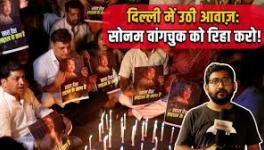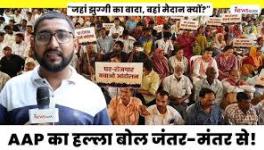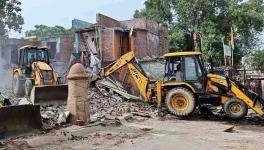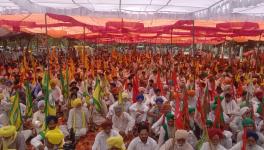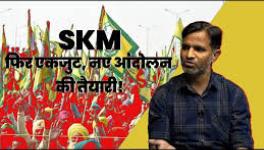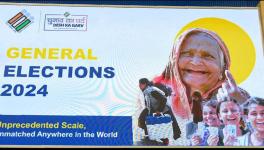Caught Between Tragedy and Farce: Patiala Clash and After
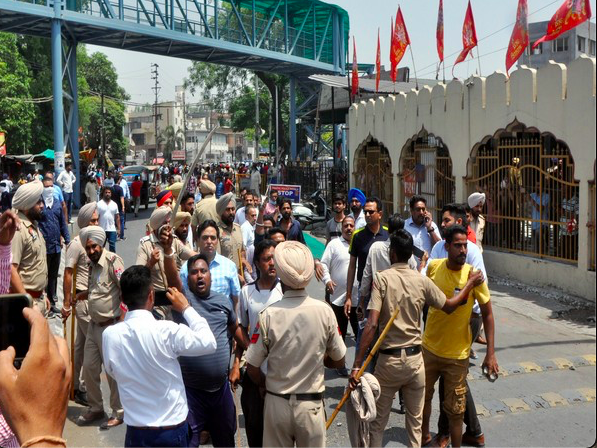
For many Punjabis, 13 April 1978, a Baisakhi Sunday, the day the Khalsa Panth was founded, is vividly imprinted on the landscape of haunting memories. It was the day Punjab’s problems began. The Janata Party had defeated the Congress party and come to power just a year before, starting an age of hope that Jayaprakash Narayan called “total revolution”.
In the Assembly election held after the Janata Party’s victory at the Centre, Parkash Singh Badal became the chief minister of Punjab. Meanwhile, Jarnail Singh Bhindranwale, the newly-appointed chief of the Damdami Taksal at Mehta Chowk, had continued his predecessor’s crusade against the Nirankari sect accusing it of belittling the Sikh holy book. After a provocative lecture, a group of his Sikh followers, and those of the Akhand Kirtani Jatha, moved from the Golden Temple to attack the Nirankari congregation. Seventeen people were killed in the clash.
Nobody could anticipate that this clash would culminate in a tragedy that would lead to more deaths and killings. There were various views on how a conflict between two sects would culminate in a full-fledged militant movement raising the demand for Khalistan. One theory is that both the Congress party and Akali Dal leaders were responsible for its spread. To what extent this is true is difficult to ascertain, but, as it turned out, it could have been prevented from turning into a tragedy for the people of Punjab. There is a reasonable basis to suspect that both major parties of Punjab have had some role. However, meddling in religious affairs and issues has remained a favourite pass-time of power games across the country.
Progressively, political parties have manifestly and consciously exploited the religious sentiments of people to come to power. As a result, we have reached a stage where religious sentiments have entered the public space to the extent that the media regularly indulges in irrelevant debates that may never bring about an egalitarian, free and inclusive society our Constitution visualised.
The militant movement in Punjab, also called the Khalistan movement, was systematically suppressed in 1993, after which only one major terrorist incident occurred, namely the assassination of then Punjab chief minister, Beant Singh, in 1995. However, small associations, mostly outside India, once in a while raise issues suitable to the Khalistani debate. Interestingly, this generally occurs during elections. From this, we should understand the assumption of some political parties that the Khalistan issue would evoke emotive responses. Most leaders forget that Punjab Police could suppress the militant movement because the Sikh masses had become frustrated and disenchanted with it.
Moreover, during the fifteen-year militant movement, there were hardly any instances of Hindu-Sikh conflicts or riots anywhere in Punjab. Even divisive forces could never break the communal amity in the State, which has several explanations.
The political landscape of Punjab has suddenly changed ever since the Aam Aadmi Party (AAP) got an unprecedented majority in the recent Assembly election. The results have ended the hegemony of the two parties that have alternatively ruled the State for a long time. If 1977 was the year the hegemony of the Congress was seriously challenged in Punjab, 2022 is the year of a significant political change which is expected to bring some other much-needed changes. The AAP government has started working in this direction.
However, the defeated parties would not rest to await the next election. There are already signs of their attempts to work in this direction. The primary line of action seems to be raising a hue and cry about the deteriorating law and order situation in Punjab, although the reality is that, until recently, nothing exceptional has happened to carry such concerns.
Punjab has had many Shiv Senas, but they do have no political presence, even as a pressure group or ideological force. These outfits have generally been ignored because they have no politico-ideological connection with the Shiv Sena of Maharashtra. However, on 29 April, the Patiala Shiv Sena, after making a prior announcement, carried a procession against Khalistan. From out of nowhere, some Sikh outfits emerged and clashed with the Sena members.
The police quickly controlled the situation, but more than actual tensions at the site of the clash, the media turned on the heat as if something terrible had happened. Sikh and Hindu leaders quickly rose to condemn the incident. Then followed rumours and the usual actions that a state government takes to show ‘something has been done. In fact, there was nothing to be done because there is no history of communal tensions in Punjab—not even during the militancy. And the Khalistan movement is virtually a part of history except for some Sikh diaspora groups.
Within a few days, just as the Patiala events were taking the back seat, news flashed on local Punjabi channels on 5 May that a car loaded with arms had been seized in Haryana by the Karnal Police. The channel News18 Punjabi reported that about thirty locally-manufactured pistols and three containers of explosive materials had been found. However, later on, it was corrected to one pistol, and there was no confirmation on the containers allegedly carrying explosive material. Four people were arrested, most Sikh, and it turned out they were going to Hyderabad, allegedly to deliver the seized contraband. The entire episode seemed to be a drama played with the purpose of underlining the Khalistan connection, whereas one should remember that during the militant movement, the terrorists were using AK47 rifles.
However, the story of a drone flying over Indian territory from Pakistan a day earlier was connected with dropping explosives, and the plot seemed set—but for what was still not clear. Then came the Khalistan Zindabad slogans and the flag installed on the Himachal Pradesh Assembly building wall on 8 May at Dharamshala. Now we have two SITs, one set up by the Punjab government to investigate the Patiala clash, and the second is a six-member team set up by the Himachal government.
What is happening is something that falls between tragedy and farce. As Karl Marx pointed out a long time ago, if history repeats, it is first as tragedy, then as a farce. It is clear that with the rising popularity of AAP in Himachal, there is a threat to the hegemony of the existing political dispensation. Himachali people have also been caught with the two mutually complementary parties coming to power alternatively. One may think all the noise over Khalistan, which has made an out of the blue entry, is to deny AAP the advantage of its victory in Punjab. Significant parts of Himachal Pradesh are Punjabi-speaking, though dialects vary in some districts. We should not forget that such tactics could end in tragedy, but at this moment, it seems like a farce and nothing beyond it.
The author was a professor of sociology at Guru Nanak Dev University, Amritsar, and is a former president of the Indian Sociological Society. The views are personal.
Get the latest reports & analysis with people's perspective on Protests, movements & deep analytical videos, discussions of the current affairs in your Telegram app. Subscribe to NewsClick's Telegram channel & get Real-Time updates on stories, as they get published on our website.









